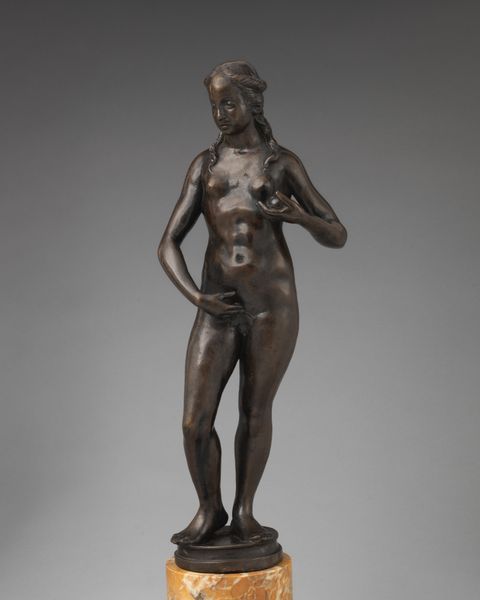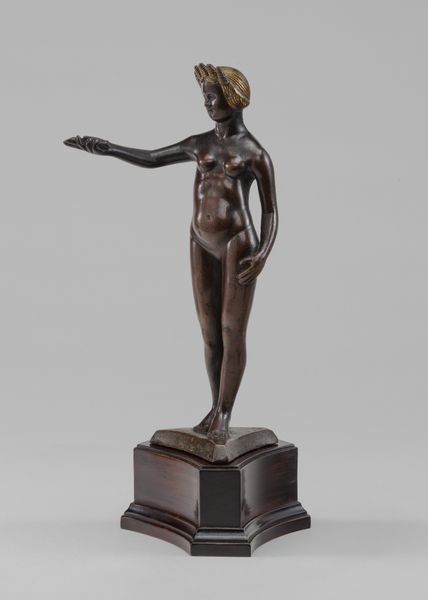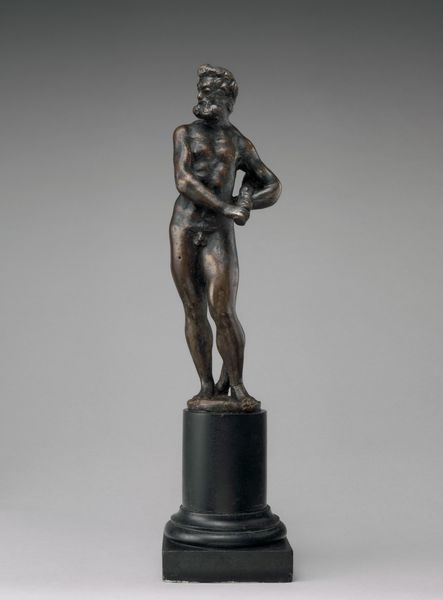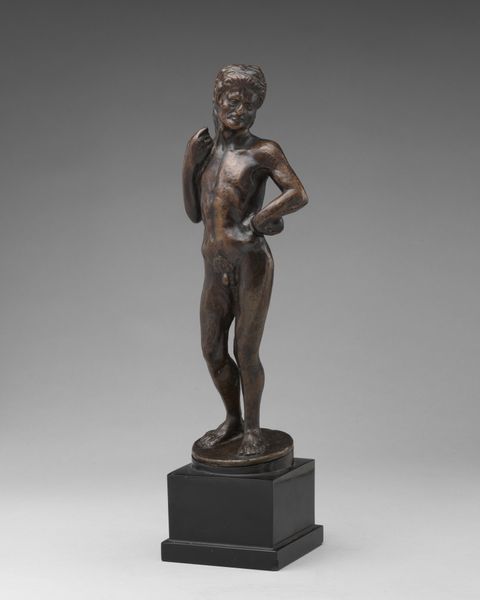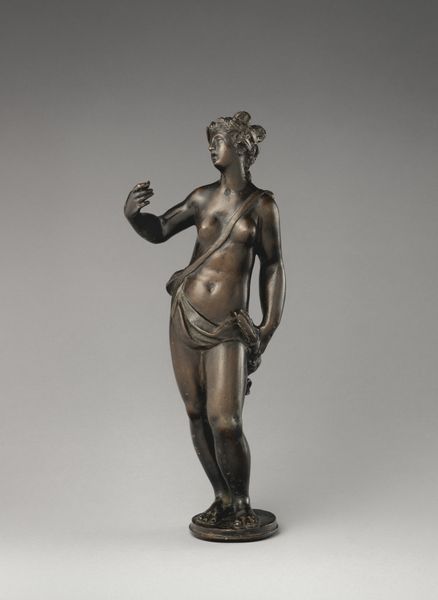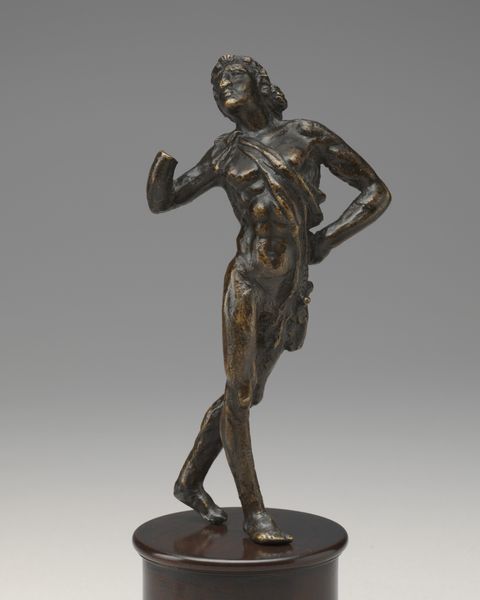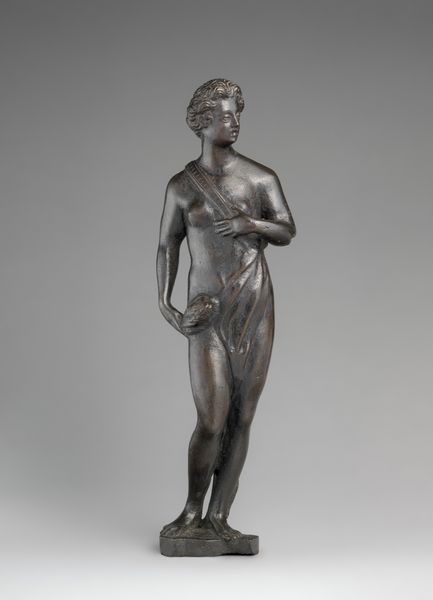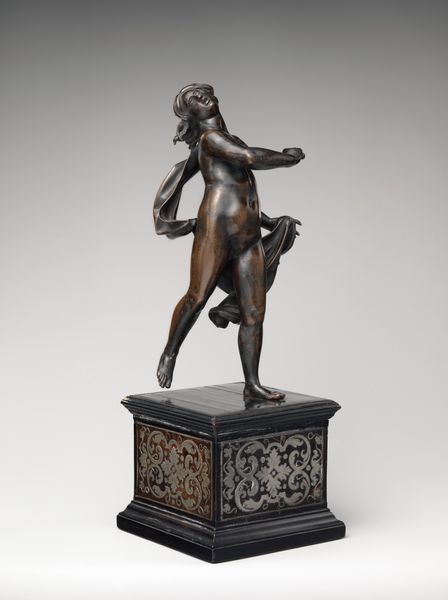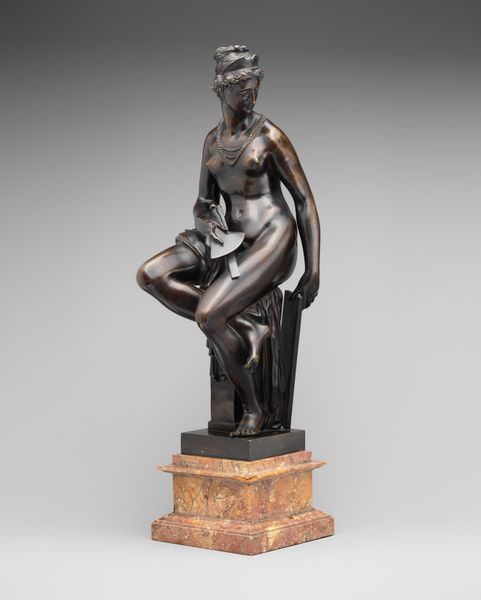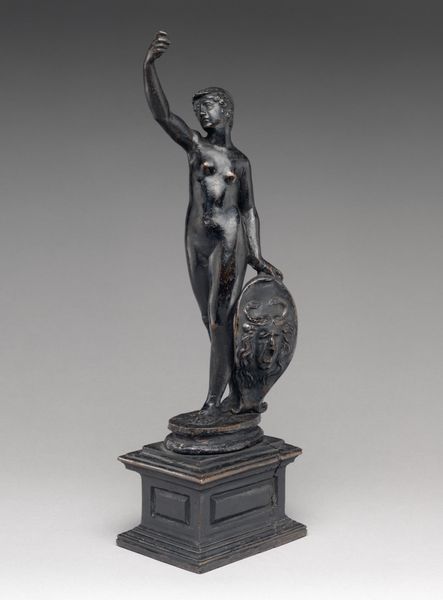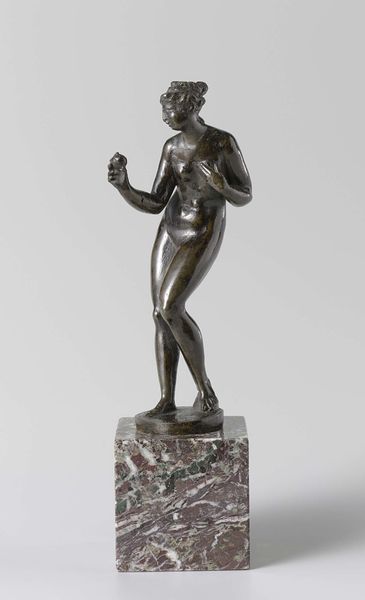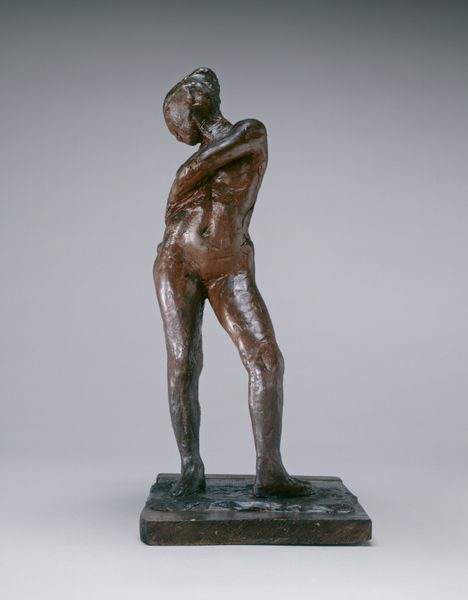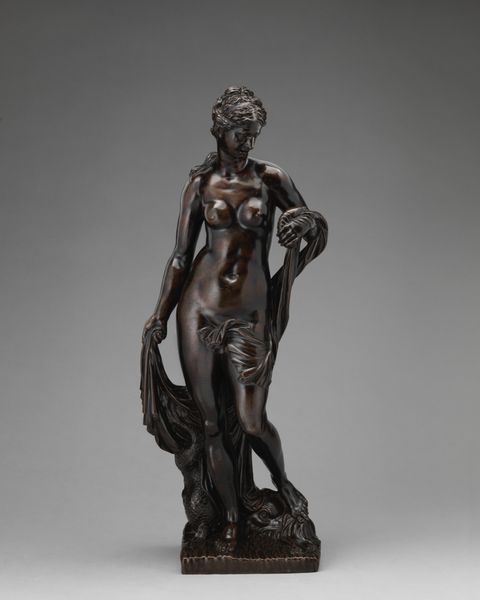
bronze, sculpture
#
allegory
#
baroque
#
sculpture
#
bronze
#
figuration
#
classicism
#
sculpture
#
history-painting
#
decorative-art
#
nude
Dimensions: sculpture confirmed ( w and d at integral base): 12 × 2 7/8 × 2 7/8 in. (30.5 × 7.4 × 7.4 cm) figure only: 12 × 3 1/2 × 3 in. (30.5 × 8.9 × 7.6 cm) overall height (on pedestal): 16 in. (40.6 cm)
Copyright: Public Domain
Curator: Here we have an 18th-century bronze sculpture entitled "Venus," attributed to Massimiliano Soldani and residing here at The Metropolitan Museum of Art. Editor: She is breathtaking, but...restrained. It’s a small-scale sculpture, yet the polished bronze seems to glow from within, highlighting the classical pose. She is a study in contrapposto, her modesty palpable, her gaze averted. Curator: Indeed. Soldani, a key figure in Florentine Baroque sculpture, expertly uses bronze to invoke classical ideals but with a clear demonstration of virtuosity highly prized at the time. Note how the tactile smoothness gives it a highly precious feeling. Editor: The smoothness almost reinforces a sense of distance, doesn’t it? A god is someone to admire but not to necessarily reach. While referencing classicism, she feels like she is pushing back at a restrictive canon. Her attempt at modesty does not take away from the blatant presentation of her sexuality. Curator: The motif of Venus, often equated with love and beauty, carries significant weight across various social and artistic strata during that period. It can be said that interpretations are contingent upon social discourse. This one seems like a direct dialogue with its predecessors. Editor: Precisely, which is why the historical framework is crucial to interpretation. As an activist, I see how "Venus" reflects broader societal concerns. Questions of power, gender, and representation intertwine when we analyze how such idealized feminine forms function within the context of institutional spaces. We are encouraged to admire beauty, but we must also reflect on its potential to become another object. Curator: That brings fresh perspectives to it, opening the floor to discourse around gender and representation, and how different historical settings mold the interpretation and place of art. Editor: Yes. Ultimately, the artwork invites us to examine not only the artwork’s aesthetic qualities but also the ideological frameworks within which they are exhibited. That’s the challenge for art history and its interpreters, especially in modern settings.
Comments
No comments
Be the first to comment and join the conversation on the ultimate creative platform.
